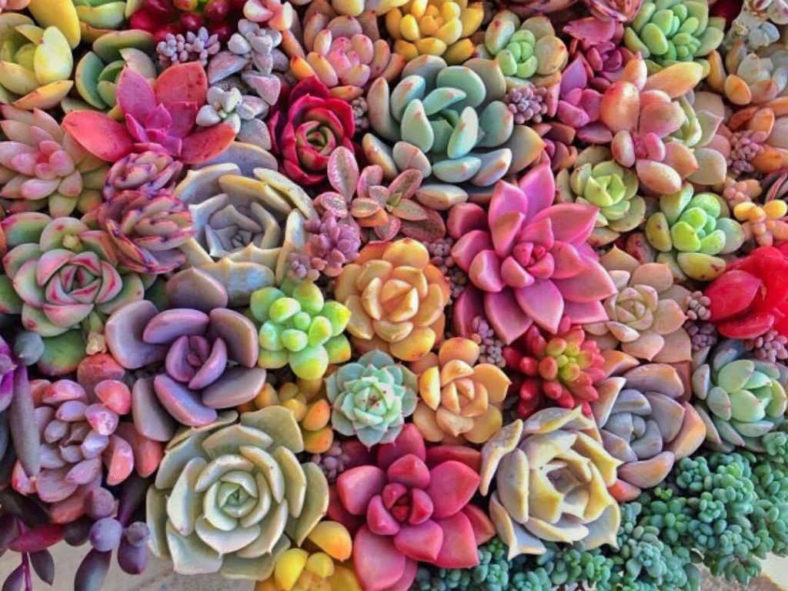Succulents can change colors throughout the year due to various factors, including water, daylight length, heat, fertilizer, and soil. Like other plants, they absorb water and carbon dioxide, and use these resources to produce glucose and oxygen through the process of photosynthesis. In this process, pigments such as chlorophyll (which exhibits the color green), carotenoids (which exhibit colors ranging from yellow to orange), and anthocyanins (which exhibit colors ranging from red to purple) play a crucial role.
Most succulents turn green when grown in the shade because chlorophyll is responsible for capturing sunlight to keep the photosynthesis process going. When placed in the sun or at extreme temperatures, anthocyanins are present in higher concentrations in plant cells. The anthocyanins act as antioxidants, protecting plants against overexposure to UV light and extreme temperatures. It is also known that anthocyanins are more stable at a lower temperature. That is why we often see succulents green in summer and color up during fall and winter.
Like other plants, succulents tend to grow longer stems in the shade, and their leaves are more spread out. That is simply because all plants want to receive more sunlight by making themselves broader and closer to the sun.

Control Water
Overwatered succulents tend to grow leggy stems and spread-out leaves. Resisting the temptation to water your plant too often is the most effective way to maintain its size and rosette shape.
Also, many people wonder why the leaves of their succulents are so thin and long, unlike those of plants grown by experts. That is because when you overwater, your plant tends to grow larger and stretched out, while waterless plants have to store water in their leaves. That is why leaves are fatter and juicier because they have less water.
Control Sunlight
Insufficient sunlight can cause your succulents to appear green and leggy, while excessive sunlight can lead to sun damage. As sun exposure increases, anthocyanins are in higher concentration to protect the plant from sun damage. However, if your local UV rating is too high, you can also protect your plant with a layer of shade cloth that blocks less than 50% of UV. Alternatively, put the plant in a spot with morning sun and afternoon shade.
Temperature
The temperature usually goes hand in hand with sunlight. With extreme temperatures ranging from over 90°F (32°C) to below 32°F (0°C), plants can go dormant to adapt to their environment. The growth slows dramatically as they go dormant in the summer, and the leaves turn vibrant colors. Also, most rosette succulents close their leaves into a ball shape to reduce evaporation. In winter, when some succulents die back or lose leaves to protect their root systems, others will close up and change color, such as Sempervivums, to protect themselves from the cold winter (darker colors attract heat). If they survive, they will put out new growth when the temperature warms up.
Fertilization
Fertilization is usually not a major concern, as most succulents can thrive with little to no fertilizer added. However, most succulents will thrive best when fertilized with water-soluble fertilizer every two months to encourage growth. The plants may produce new growth and turn green for a while, but they quickly return to their vibrant color with sufficient exposure to sunlight.
Source: mzgardens.com
Links
- Succupedia: Browse succulents by Scientific Name, Common Name, Genus, Family, USDA Hardiness Zone, Origin, or cacti by Genus